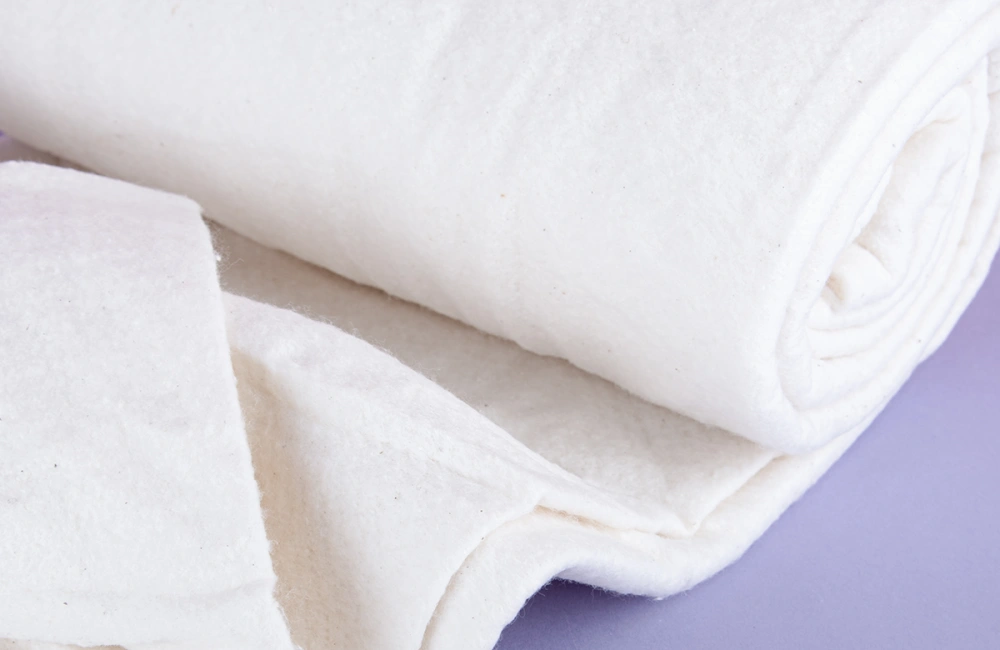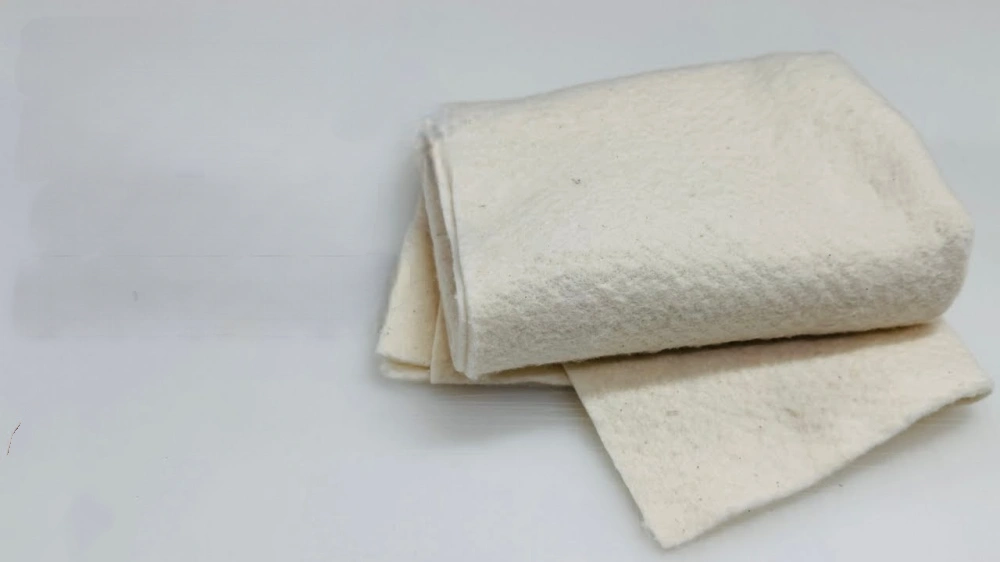You might wonder if you need to wash batting before quilting, especially when working with cotton quilt batting or cotton-blend options. The answer isn’t always the same. It depends on the type of batting, its condition, and the desired look for your quilt. Here’s a quick guide:
Aspect | Details |
|---|---|
Type of Cotton Batting | Made from 100% natural cotton fibers, soft, breathable, naturally hypoallergenic |
Condition Effects | Tends to shrink and develop a crinkly, vintage texture after washing |
Expert Recommendations | Prewash to avoid excessive shrinkage and remove chemicals/dyes from finishing |
Impact of Prewashing | Stabilizes batting to prevent quilt distortion, reduces shrinkage, and controls vintage crinkle effect |
Quality Influence | Lower-quality or chemically treated cottons benefit more from prewashing |
Care Tips | Use gentle washing and avoid high-heat drying to maintain softness and integrity |
If you want to avoid shrinkage or remove chemicals, prewashing the batting is a good idea. Some experts suggest that prewashing helps stabilize cotton quilt batting and keeps your quilt looking its best. Fanda Fabrics offers high-quality quilt batting, so you can choose the best cotton or blend for your next quilting project.
Key Takeaways
Prewash cotton batting to reduce shrinkage, remove chemicals, and keep your quilt size stable.
Skip prewashing if you want a soft, crinkly vintage look with more puffiness in your quilt.
Choose the right batting type: 100% cotton for breathability and classic feel, cotton-blend for less shrinkage and wrinkle resistance.
Cotton batting offers comfort, durability, and eco-friendliness, making it great for year-round quilts.
Prepare your batting carefully by cutting extra edges, pinning layers well, and using proper quilting tools for smooth results.
Types of Cotton Quilt Batting

When you start a new quilt, picking the right batting makes a big difference. Fanda Fabrics offers a wide selection of cotton quilt batting, including 100% cotton, cotton-blend, and specialty options like bamboo and silk. Each type brings something unique to your quilting projects.
100% Cotton Batting
You might love 100% cotton batting if you want a natural, soft, and breathable feel in your quilts. This batting uses only cotton fibers, which means it’s warm but not heavy. After washing, it shrinks a bit—usually around 3-5%—and gives your quilt that classic, crinkly look you see in antique quilts.
Many quilters enjoy this texture because it adds character and coziness. Cotton batting absorbs moisture and helps regulate temperature, making it a great choice for year-round use. You’ll find it works well for both hand and machine quilting, though it can feel a little tougher to hand quilt.
Tip: If you want to avoid extra shrinkage, consider prewashing your cotton quilt batting before you start sewing.
Here’s a quick comparison to help you see the differences:
Batting Type | Fiber Content | Key Properties |
|---|---|---|
100% Cotton Batting | 100% cotton | Soft, breathable, shrinks for a crinkly look, low loft |
Cotton-Blend Batting
Cotton-blend batting, often called 80/20 batting, mixes about 80% cotton with 20% polyester. This blend gives you the best of both worlds. You get the softness and breathability of cotton, plus the added durability and loft from polyester.
Cotton-blend batting resists wrinkles and creases better than pure cotton, and it shrinks less—usually just 1-3%. It drapes beautifully, making it a favorite for modern quilt batting projects. If you want a quilt that holds its shape and still feels soft, this is a great option.
Feature/Aspect | Cotton-Blend Batting (80/20) | 100% Cotton Batting |
|---|---|---|
Shrinkage | 1-3% | 3-5% |
Drape and Softness | Excellent drape, silky feel | Soft, classic drape |
Wrinkle Resistance | Resists wrinkles | Can crease |
Specialty Batting Options
Fanda Fabrics also offers specialty quilt batting, like bamboo and silk blends. These options take your quilting to the next level. Bamboo batting combines cotton’s softness with bamboo’s silky texture and eco-friendly qualities.
It absorbs moisture quickly, dries fast, and resists odors—perfect if you want a fresh, comfortable quilt. Silk batting feels luxurious and lightweight, adding a touch of elegance and smoothness to your project. Both bamboo and silk battings are hypoallergenic and gentle on sensitive skin.
Specialty Batting Option | Unique Features | Benefits of Quilting |
|---|---|---|
Cotton-Bamboo Blend | Soft, breathable, moisture-wicking, eco-friendly | Great for sensitive skin, stays fresh, sustainable |
Cotton-Silk Blend | Lightweight, smooth, elegant drape | Adds luxury and breathability to high-end quilts |
When you choose from Fanda Fabrics’ range, you can match your batting to your quilt’s purpose—whether you want warmth, softness, or a modern look. Always check the label for fiber content and care instructions, so your finished quilt turns out just the way you want.
Benefits of Cotton Batting

Breathability and Comfort
You want your quilt to feel cozy and comfortable, right? That’s where cotton batting shines. The natural fibers in cotton create tiny spaces that let air move freely. This means your quilt stays cool in the summer and warm in the winter. Cotton absorbs moisture, so you won’t feel sticky or overheated.
Many quilters love how cotton feels against the skin—soft, gentle, and never scratchy. Synthetic battings can trap heat and make you sweat, but cotton keeps things fresh and breathable. If you want a quilt that feels good all year, cotton is a smart choice.
Tip: If you’re making a quilt for someone with sensitive skin, cotton batting is a gentle, hypoallergenic option.
Durability and Eco-Friendliness
Cotton batting stands out for its strength and natural origins. You get a batting that holds up through years of use and washing. Cotton fibers are tough, so your quilt keeps its shape and comfort over time.
Plus, cotton is biodegradable and comes from plants, making it an eco-friendly pick. Unlike synthetic options, cotton batting breaks down naturally and doesn’t add to landfill waste. If you care about the environment and want a long-lasting quilt, cotton batting delivers both.
Batting Type | Durability | Eco-Friendliness | Feel |
|---|---|---|---|
Cotton | Strong | Biodegradable | Soft |
Polyester | Very strong | Not biodegradable | Less natural |
Bamboo | Good | Eco-friendly | Silky |
Versatility for Quilting Projects
You can use cotton batting in almost any quilting project. It works for lightweight summer quilts, thick winter blankets, padded clothing, and even craft projects. Cotton’s low loft lets you add detailed stitching without making your quilt bulky. It resists bunching, so your quilt stays smooth and flat.
After washing, cotton batting gives your quilt a charming, crinkly look that many people love. You can machine or hand quilt with it, and it’s easy to care for. Whether you’re a beginner or an experienced quilter, cotton batting adapts to your needs and helps you create high-quality, beautiful quilts.
Quilt Batting Care and Prewashing
When to Prewash

You might wonder if you really need to prewash your batting before starting a quilt. The answer depends on a few things. If you use batting purchased new from Fanda Fabrics, you usually get clean, high-quality material.
You can skip prewashing if you want that classic crinkled look after your first wash. Some quilters love this vintage texture, especially for cozy throws or heirloom quilts.
However, you should always prewash if your batting is old, soiled, recycled, or if you notice any dust or odors. Prewashing helps remove chemicals, dirt, and excess dyes. If you plan to make a baby quilt or a quilt for someone with sensitive skin, prewashing is a smart move.
Textile care experts say you should check the label for care instructions. Some manufacturers recommend prewashing cotton quilt batting, while others do not. If you want your quilt to resist shrinking and keep its shape, prewashing is a good idea.
Tip: Prewash all quilt components—fabric, batting, and backing—if you want to avoid uneven shrinkage and dye bleeding.
Effects of Prewashing vs Not Prewashing
Let’s talk about what happens when you prewash or skip prewashing your quilt batting. Here’s a quick breakdown:
Prewashing tightens the fibers in cotton quilt batting. Your quilt will keep its intended size after you wash it. You won’t see much shrinkage later.
If you don’t prewash, the batting will shrink after you finish the quilt. This causes the fabric to pull in around the stitches, making your quilting lines stand out. You get a puffier look in the unstitched areas. Some quilters love this effect, while others prefer a smoother finish.
Prewashing removes excess dyes, which helps prevent color bleeding. Your quilt will look cleaner and more vibrant.
Skipping prewashing saves time, but you risk shrinkage and possible dye stains, especially if you use flannel or colored batting.
The choice to prewash depends on your project, your time, and your style. If you want a quilt with a crisp, flat look, prewash your batting. If you want a soft, crinkly texture, skip it.
Prewashing Batting | Not Prewashing Batting |
|---|---|
Maintains quilt size | The quilt may shrink after the first wash |
Removes chemicals and dyes | Risk of dye bleeding |
Smooth, flat finish | Puffier, crinkled texture |
Takes extra time | Saves time up front |
Note: Experts say prewashing is especially important for baby quilts, heirlooms, or when using fabrics that shed lint or bleed dye.
Step-by-Step Prewashing Guide
Ready to pre-wash batting for your next quilt? Here’s a simple guide you can follow with Fanda Fabrics’ cotton quilt batting:
Check the Label: Always read the care instructions on your quilt batting purchased new. Some types need gentle handling.
Fill a Tub or Sink: Use lukewarm water. Avoid hot water, which can cause extra shrinkage.
Submerge the Batting: Gently press the cotton batting into the water. Let it soak for 10-15 minutes.
Rinse Thoroughly: Drain the water and refill with clean water. Rinse until the water runs clear.
Remove Excess Water: Press out water by hand. Don’t wring or twist the batting.
Dry Flat: Lay the batting on a clean towel or drying rack. Air dry for best results. If you use a dryer, choose a low-heat or air-dry setting.
Smooth Out Wrinkles: If you see wrinkles, use a short dryer cycle or gently steam the batting.
😊 Prewashing helps you avoid surprises later. Your quilt will look just the way you want!
Pre-wash batting isn’t hard, but it does take a little extra time. You get peace of mind knowing your quilt will resist shrinking and keep its beautiful shape. Whether you choose to prewash or not, Fanda Fabrics’ cotton quilt batting gives you reliable quality for every project.
Quilting Tips with Fanda Fabrics Batting
Preparing Batting for Quilting
Getting your batting ready sets the stage for a smooth quilting experience. Start by prewashing your cotton batting if you want to remove any chemicals or sizing. Iron it to get rid of wrinkles. When you cut the batting, leave about two extra inches around the edges of your quilt top.
Use a rotary cutter and ruler for clean lines. Layer your quilt components in order: backing fabric (right side down), batting, and then the quilt top (right side up). Make sure everything lines up and stays wrinkle-free.
Pin or baste the layers together, starting from the center. Space your pins about 4-6 inches apart to keep the batting from shifting. Sew the layers with a straight or zigzag stitch, using a quarter-inch seam allowance.
Guide the fabric steadily to avoid puckering. After sewing, trim away any extra batting and fabric just beyond the seam line. Finish the edges with a zigzag stitch or serger, or get ready to add binding.
Tip: Keep your workspace organized and practice on scraps before you start your main project. This helps you get comfortable with your techniques.
Achieving Desired Quilt Texture
You can control the texture of your quilt by choosing the right batting for quilts and adjusting your quilting techniques. Thin cotton batting, like Warm and Natural, adds structure without making your quilt bulky.
If you want a classic crinkly look, skip prewashing. For a smoother finish, prewash your batting. Combine batting with light or medium-weight interfacing if you want more structure.
Use consistent stitch length and press seams open or to one side. This keeps your quilt blocks flat and neat. A walking foot helps feed layers evenly, preventing stretching and uneven lines. Spray with Best Press and iron on low heat if your quilt gets too puffy.
Texture Goal | Batting Choice | Quilting Tip |
|---|---|---|
Crinkly/Vintage | Cotton, unwashed | Skip prewash, quilt densely |
Smooth/Flat | Cotton, prewashed | Use consistent stitches |
Structured | Thin cotton + interfacing | Press seams, trim bulk |
Troubleshooting Common Issues
Quilting with cotton batting sometimes brings challenges, but you can fix most problems with a few simple steps:
Uneven lines? Use a walking foot to keep layers feeding evenly.
Running out of thread? Check your bobbin before you start, and knot/tuck thread ends if you need to restart.
Thread snapping? Store the thread with a damp paper towel in the fridge to add moisture.
Quilt edges look wavy? Make sure blocks are square and maintain a quarter-inch seam allowance.
Bearding (batting fibers poking through)? Use high-quality fabric, a new needle, and polyester thread to reduce fiber migration.
Keep your batting clean and dry before use. Store it in a cool, dry place away from sunlight. Fold gently and use acid-free tissue or cotton muslin between layers. Avoid plastic bags, which trap moisture. Regularly check your stored batting to keep it in top shape.
Note: Replace your needle often and use gentle washing to keep your quilt looking fresh.
Conclusion
You’ve learned that prewashing cotton quilt batting is optional. You might skip it for a vintage, crinkly look or choose to prewash if your batting is old, recycled, or has unknown fibers.
Cotton batting gives you breathability, comfort, and durability for every season. Fanda Fabrics supports you with premium materials, customizable sizes, and strict quality control.
Prewash for less shrinkage and fewer chemicals
Skip prewash for a puffier, softer quilt
Fanda Fabrics offers reliable, high-quality batting for every project
Ready to start quilting? Explore Fanda Fabrics’ collection and create your next masterpiece with confidence! 😊
FAQ
Do you need to prewash all types of quilt batting?
You don’t need to prewash every batting. If you use new, high-quality cotton or blends from Fanda Fabrics, you can skip it. Prewash only if you want less shrinkage or if the batting looks dusty or smells odd.
Can you put cotton batting in the dryer?
Yes, you can use a dryer. Choose a low-heat or air-dry setting. High heat may cause extra shrinkage. Lay the batting flat if you want to avoid wrinkles.
What’s the best way to get wrinkles out of batting?
Try gently steaming or spritzing the batting with water. Smooth it out by hand. You can also use a short, low-heat dryer cycle. Avoid ironing directly on the batting.
Is cotton batting good for summer quilts?
Absolutely! Cotton batting feels light and breathable. Your quilt stays cool and comfortable, even on warm nights. Many quilters pick cotton for year-round use.
What can you use instead of quilt batting?
You have options! Flannel, muslin, fleece, or upcycled fabrics like old sheets or towels work well. These alternatives give your quilt a different feel and weight.
